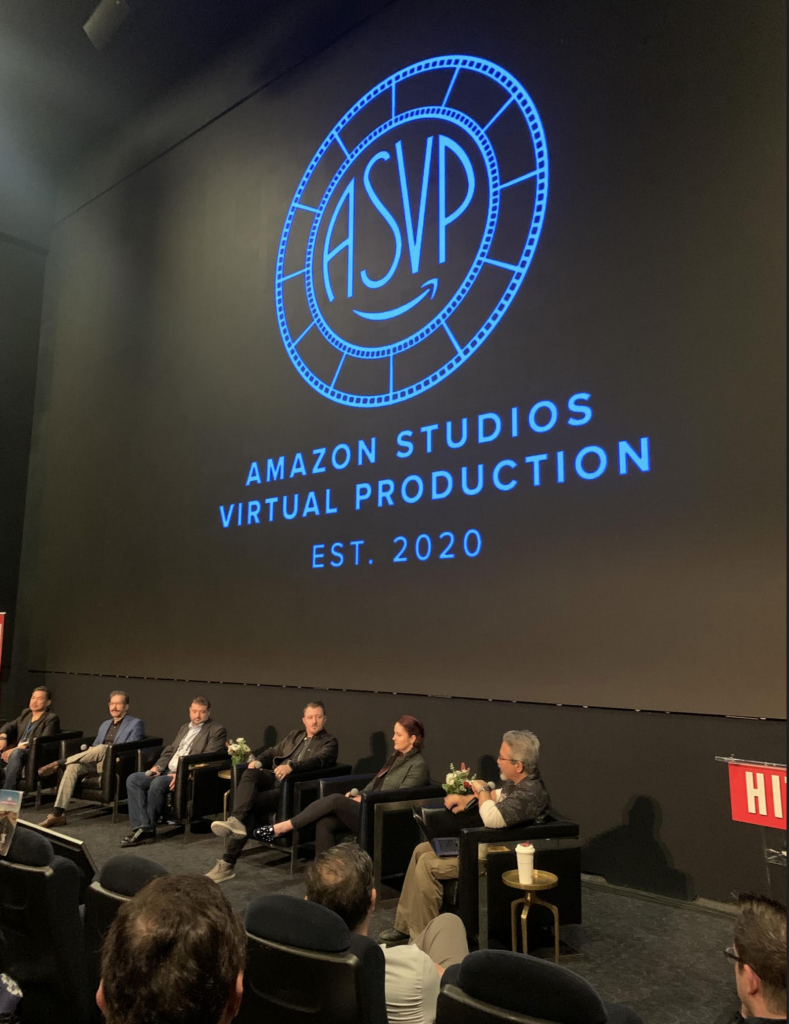M+E Daily

HITS 2023: Amazon Studios Details a Path for the Future of Virtual Production
Story Highlights
CULVER CITY, Calif. — James Thomas, virtual production executive with Amazon Studios, will be the first to tell you: virtual production isn’t for everyone, and it certainly isn’t for every project.
“That’s the first stop, it all starts with the material. Not everything is virtual production-worthy,” he said, speaking May 23 during the opening Amazon Studios panel “Virtual Production: The Next-Level” at the Hollywood Innovation and Transformation Summit (HITS) at The Culver Theater.
“Do we want to take a crew out to a dark, dank cave in Kentucky? Not everything fits. The first thing I always say with virtual production is that it isn’t right for everything,” Thomas said.
“But when it’s right, it’s really right.”
 He and fellow Amazon Studios virtual production experts dived into every corner of the virtual production world, covering game engines, real-time applications, LED screens and more. These emerging technologies are changing the way storytellers envision, produce, and distribute content, with a notable impact on audiences now and in the future.
He and fellow Amazon Studios virtual production experts dived into every corner of the virtual production world, covering game engines, real-time applications, LED screens and more. These emerging technologies are changing the way storytellers envision, produce, and distribute content, with a notable impact on audiences now and in the future.
“Virtual production is production, and the most successful productions are the ones where we stay on schedule,” said panel moderator Ken Nakada, head of virtual productions operations for Amazon Studios. “A lot of our job involves protecting the plan. We’re all still learning how to shoot better with virtual production.
“In terms of innovation, it’s still early.”
The mantra for Amazon Studios and anything involving virtual production is “early and often” because employing the technology changes the pre-production process. “It’s a lot like visual effects,” said Dan Smiczek, virtual production supervisor for Amazon Studios. “It’s all about what you’re trying to create. It could take three weeks; it could take 16 weeks. A lot of the work needs to be done early on.”
Thomas agreed, reciting the age-old Hollywood adage: “’Fix it in post.’”
“Now it’s ‘fix it in pre-production. It’s really true. It changes, dramatically, how we prepare,” he said.
Heidi Hathaway, virtual production stage coordinator for Amazon Studios, said her studio and others like it — where productions can be fully in-house with the same team regularly working together — have a unique opportunity with virtual productions. “Because we’re a team that doesn’t disband, we can experiment, do new, exciting things that benefit the storyteller,” she said.
Part of that, Hathaway stressed, is how important it’s become to properly track and manage the massive amounts of metadata associated with a virtual production. Done correctly, the chances of needing to “fix in post” are greatly reduced. “In virtual production, we can bring up the exact environment of that day,” she said.
The first Prime Video production completed using virtual production on Stage 15, the Amazon Studios-owned, 34,000-square foot virtual production stage that opened in December, is the Eddie Murphy comedy Candy Cane Lane, which releases around Christmas. Nakada said the stage is one of a kind, in that it’s adaptable to whatever any project calls for, big or small in scale. “We created the stage in a modular, cookie cutter fashion,” he said. “We can focus it on any specific production need.”
The Hollywood Innovation and Transformation Summit event was produced by MESA in association with the Hollywood IT Society (HITS) and presented by Amazon Studios Technology, with sponsorship by Fortinet, Genpact, Prime Focus Technologies, Signiant, Softtek, Convergent, Gracenote, Altman Solon, AppTek, Ascendion, Coresite, EPAM, MicroStrategy, Veritone, CDSA, EIDR and PDG Consulting.









